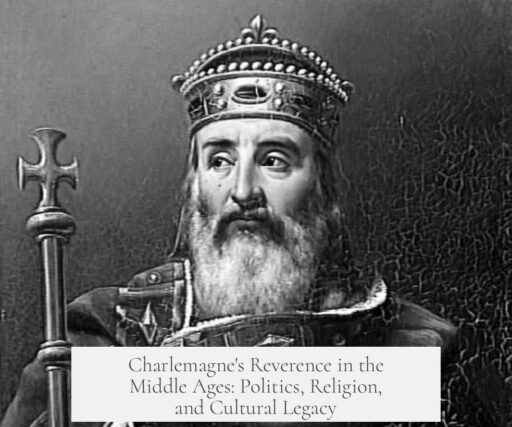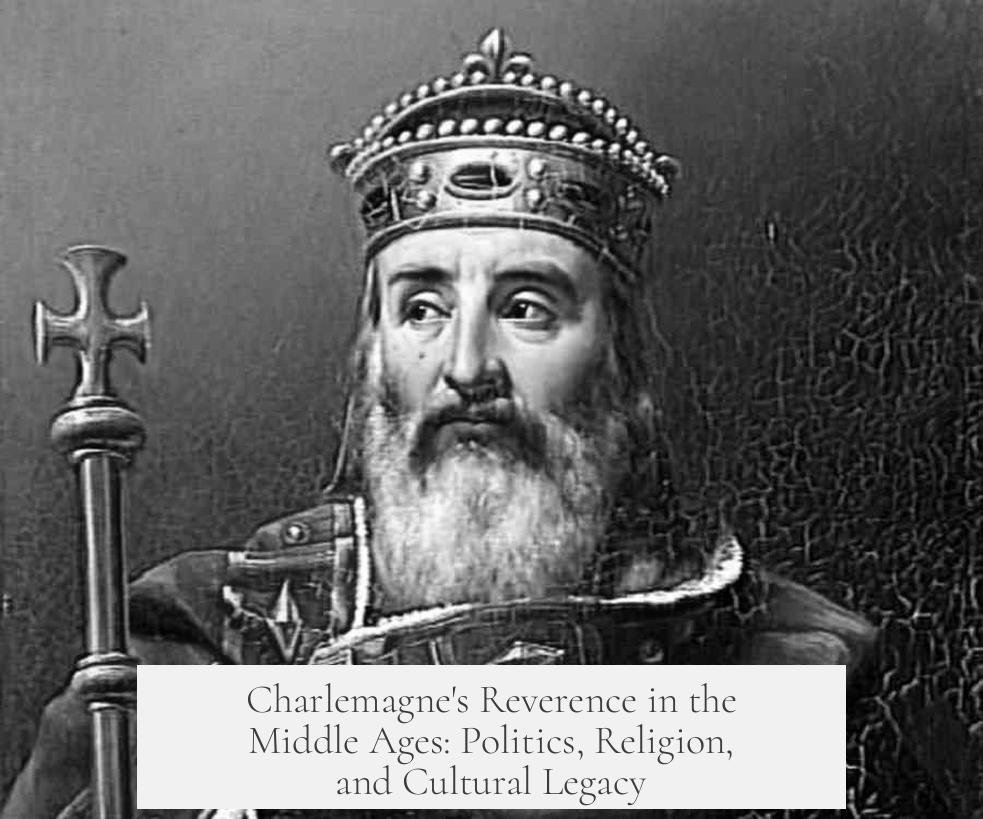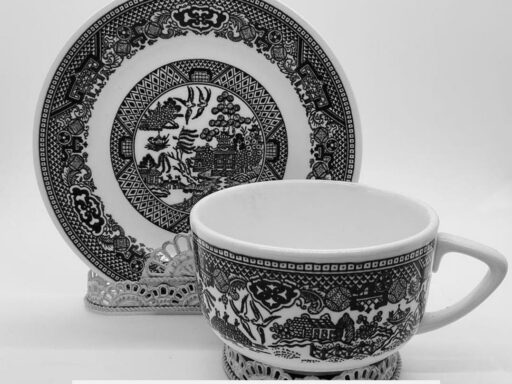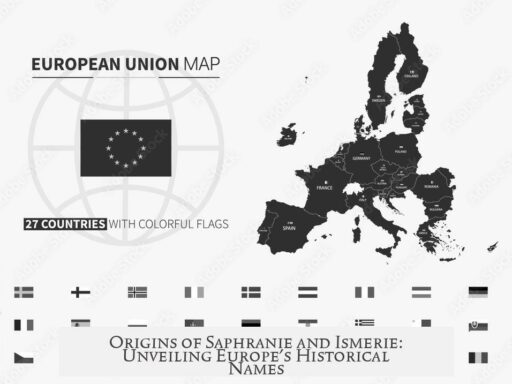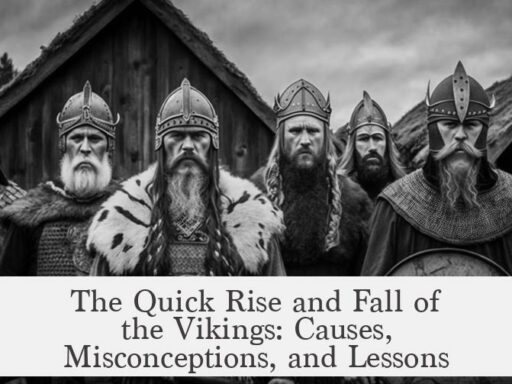Charlemagne was revered in the Middle Ages primarily because he symbolized the ideal ruler, combining political power, religious authority, and heroic legend into a lasting cultural and political model. This reverence stems from several intertwined factors: the epic tradition surrounding his figure, his role as a unifier of Christendom, the nostalgic narrative of a Golden Age, and his use as a source of legitimacy by later dynasties.
First, Charlemagne’s image became legendary through medieval epic tradition and popular media. The Chanson de Roland, one of the best-known medieval epics, portrays Charlemagne (called Carles li Reis) as a wise, powerful king. This poem casts him as a heroic warrior fighting the “Saracens” in Spain, reflecting the religious conflicts of the time. The Song features symbolic imagery, such as Charlemagne’s long white hair and beard, which signify wisdom and strength. He is shown consulting his nobles and making decisions with their counsel, highlighting his balanced leadership.
The Chanson de Roland follows the tradition of epic stories like the Iliad or Aeneid. It serves as a moral and instructional guide by presenting an idealized heroic age tied to Christian values. Charlemagne and the characters in the poem represent virtues that subjects should emulate. Thus, this epic tradition played a crucial role in shaping how medieval people viewed Charlemagne—not just as a historical figure but as a cultural and moral ideal. His deeds, though partly legendary or exaggerated, aligned with contemporary Christian warfare against Muslims, adding to his sanctified image.
Charlemagne’s reign also symbolized the fusion of political and religious authority. He embodied the concept of the Christian king chosen by God and crowned by the pope. Charlemagne’s political power was demonstrated in his military victories and strategic alliances. The narrative of him defeating Baligant after the death of Roland reinforced his might. Furthermore, his building projects, like churches and cathedrals, physically manifested his authority and piety. These monuments served as symbols of the unity between spiritual and temporal power under his reign, emphasizing his status as the ideal monarch.
In addition to his immediate legacy, Charlemagne’s reign became a powerful symbol during the later medieval period when centralized authority in Europe weakened. The late 9th and 10th centuries saw political fragmentation and cultural decline. In response, Christian reformers and chroniclers created a narrative of sacred time, casting Charlemagne’s era as a “Golden Age” of pure Christian rule, unified power, and protection of the Church. This narrative often glossed over the complexities and problems of his reign, instead presenting a simplified ideal of glorious Christian empire-building. Such nostalgic portrayals comforted and inspired medieval Europeans who viewed their own times as unstable and corrupt.
Charlemagne thus became a cultural symbol onto whom later generations projected their hopes and aspirations. The Franks, a broad social and ethnic group including much of Western Europe, saw in Charlemagne a glorious past to reclaim. Some legends even suggested that he would return from a long sleep to lead their people again, establishing him as a messianic figure embedded in medieval eschatological thought.
Finally, Charlemagne provided a vital source of legitimacy for royal dynasties that emerged after the Carolingian age. The 12th century witnessed new ruling houses such as the Hohenstaufens in the Holy Roman Empire, the Capetians in France, and the Angevins in England. These dynasties traced their authority back to Charlemagne to strengthen their claims to power. They used his image in literature and official histories to craft myths of continuity and divine favor. This political use of Charlemagne kept his image alive in medieval culture and ensured his place in the European historical consciousness.
| Reason | Explanation |
|---|---|
| Epic Tradition | Portrayed in heroic poems as a wise and powerful Christian king; model for noble conduct. |
| Ideal Ruler | Unified political and religious authority; crowned by the pope; builder of lasting monuments. |
| Golden Age Myth | Later medieval nostalgia framed his reign as a perfect era of Christian unity and strength. |
| Legitimacy for Dynasties | Used by later rulers as a founding ancestor to justify their right to rule. |
Charlemagne’s reverence in the Middle Ages rests on his blending of religious devotion, military prowess, and political authority into a compelling story. This story shaped European identity and political culture across centuries. His legendary portrayal inspired loyalty, legitimized rulers, and offered a vision of a united Christian empire that influenced medieval society long after his death.
Why Was Charlemagne So Revered in the Middle Ages?
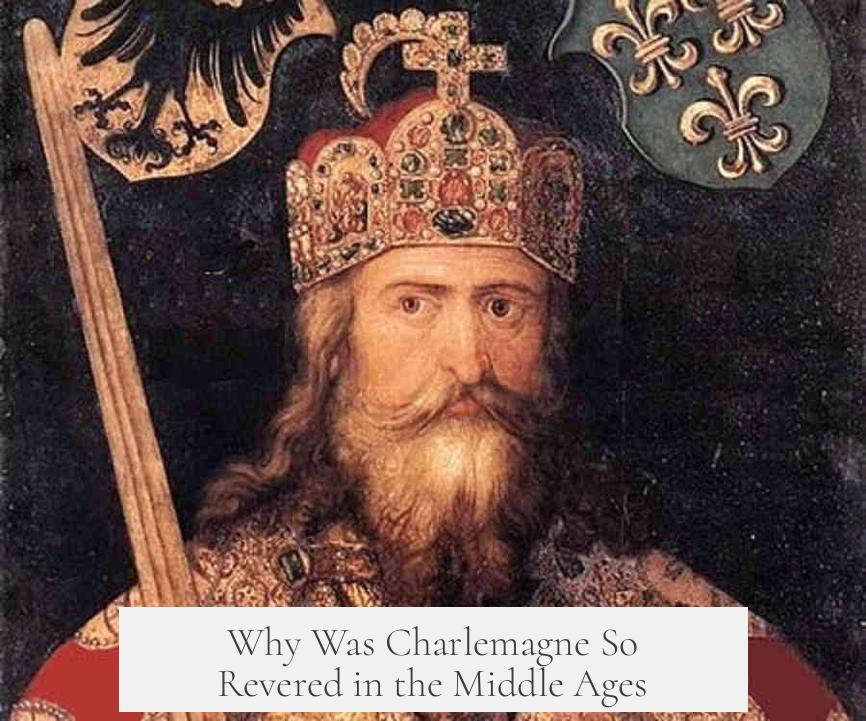
Charlemagne was revered in the Middle Ages for being the ideal ruler—strong in war, close to God, and a unifier of Europe—thanks to a mix of epic tales, political-religious symbolism, nostalgic longing, and dynastic myth-making that shaped his legend far beyond his lifetime. Let’s unwrap this fascinating story.
From the get-go, Charlemagne wasn’t just any king; he was the Charlemagne—the “Charles the Great” who conquered lands and inspired legends. But what made him *so* revered? The answer lies in how people of the Middle Ages told stories, built myths, and used history to serve their hopes and ambitions.
1. The Epic Tradition: More Than Just Fairy Tales
Imagine a medieval bestseller that’s part history, part legend, and all heroism. That’s the Chanson de Roland, or Song of Roland, the epic poem deeply woven into Charlemagne’s reputation. In this story, he is not just a king but a wise, powerful monarch adorned with long white hair and beard, commanding respect through strength and counsel alike.
This wasn’t just entertainment. The Chanson de Roland sets Charlemagne in the same league as the heroes of the Iliad, Odyssey, and Aeneid. Those stories did more than thrill— they offered moral guidance. People were encouraged to aspire to the heroic virtues portrayed: bravery, loyalty, and piety.
The epic tied Charlemagne to the sacred mission of defeating the Muslims (“Saracens”)—foes who threatened both the land and religion. This mix of martial glory and divine purpose made his image magnetic to a medieval audience.
2. The Model Monarch: Politics Meets Religion
Charlemagne’s fame wasn’t just from battlefield stories. His reign showed how politics and religion came together to craft an ideal ruler.
Imagine a king so powerful he defeated enemies like Baligant personally, after the heroic death of Roland. This wasn’t just a plot twist; it was a symbolic display of Charlemagne’s unmatched strength and divine favor.
Then, there’s the *ancient-bricks-and-mortar* thing: building grand churches and palaces. Charlemagne’s capital was graced with magnificent religious structures, signaling his role as God’s chosen king. Crowning by the pope? Check. Warrior king blessed by God? Double check.
These public displays gave people a clear image of what it meant to follow a king who wielded earthly and spiritual power in harmony.
3. Golden Age Nostalgia: Longing for Better Times
Fast forward to the late 9th and 10th centuries. Europe is messy, fragmented, and chaotic. Central authority crumbles. Enter nostalgia—the Middle Ages’ version of “Remember when things were better?”
To the Franks and many others, Charlemagne’s reign became a shining “golden age.” This period was framed as a time of unified Christian power, peace, and victory over the enemies of the faith. Was this true? Not entirely. But myth loves to polish and amplify reality.
So powerful was this nostalgia that some stories even imagined Charlemagne as a sleeping hero, waiting to awaken and lead the Franks to glory again—especially to retake Jerusalem. Talk about a comeback story waiting to happen!
4. Dynastic Legitimacy: Using Charlemagne’s Shadow
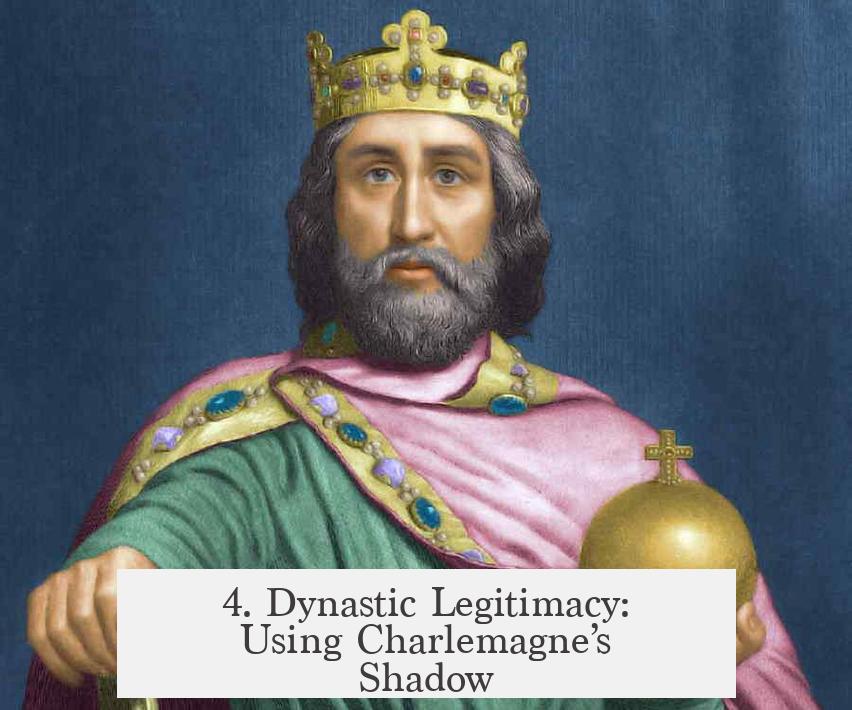
By the 12th century, many royal houses craved a legendary ancestor to secure their throne. Enter Charlemagne, the ultimate mythical forefather for the Hohenstaufens in the empire, the Capetians in France, even the Angevins in England.
Claiming descent from Charlemagne wasn’t just bragging rights. It was political gold that legitimized rule. The kingship was then wrapped in a story of divine blessing and rightful power passed down like a treasured heirloom.
This political tool fed back into literature and historical accounts, making the legendary Charlemagne even bigger in popular imagination.
What Can We Learn From Charlemagne’s Legendary Status?
- History blends with myth to shape powerful symbols for societies.
- Stories told about rulers often serve immediate political and cultural needs.
- Nostalgia for a “golden age” is a timeless human reaction to uncertain times.
- Legitimacy is as much about narrative and perception as it is about actual power.
So, the next time someone tells you Charlemagne was just another medieval king, remember: he was an ancient brand, a hero, a symbol carefully crafted and maintained through poetry, stone, and politics—one whose story was meant to inspire, control, and unify a restless Europe.
Who knew a long white beard and some epic poems could make a ruler so respected and remembered for centuries? Charlemagne wasn’t just revered; he was immortalized in the collective imagination, becoming a beacon of power, faith, and unity in a fragmented world.
